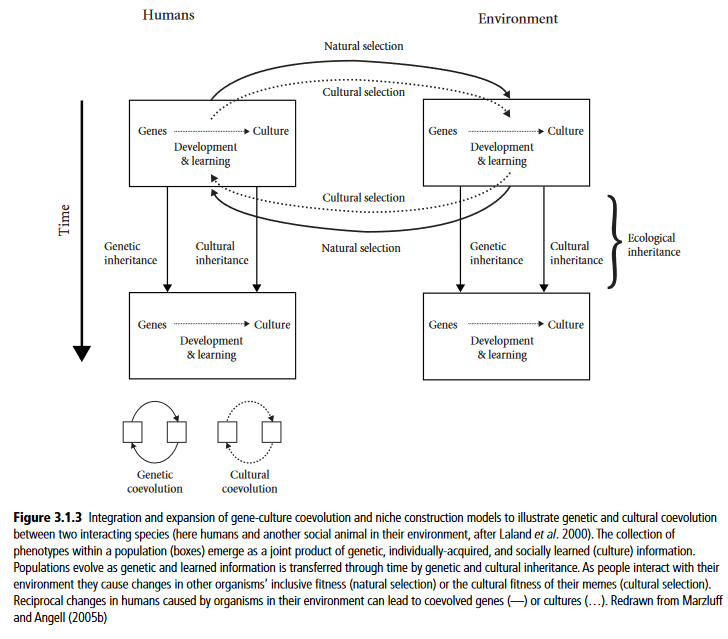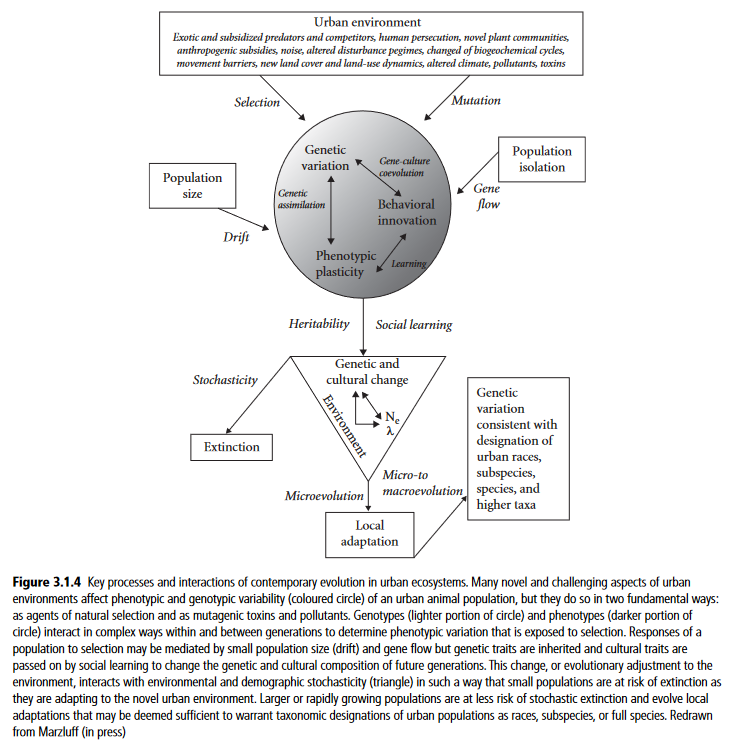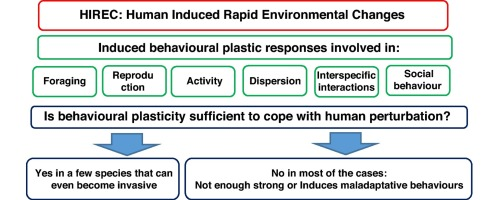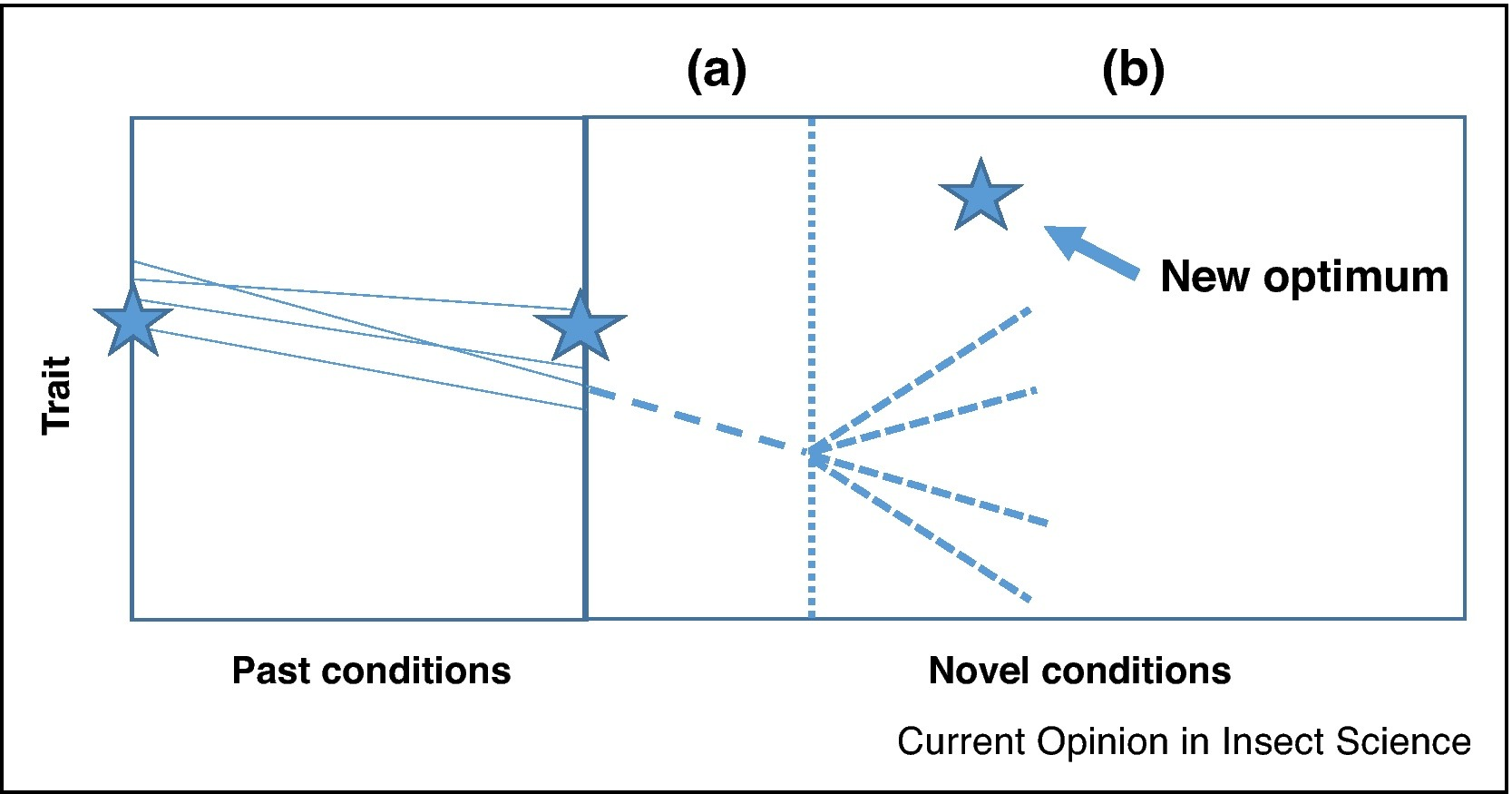Evolution
Cf.
- emergence, generation
- Cognition
- extended evolutionary synthesis
- cell-based evolution
- systems biology
Symbiogenesis
Symbiotic Earth: How Lynn Margulis Rocked the Boat and Started a Scientific Revolution. Documentary, 2017.
Gilbert, Scott F., Jan Sapp, and Alfred I. Tauber. ‘A Symbiotic View of Life: We Have Never Been Individuals’. The Quarterly Review of Biology 87, no. 4 (2012): 325–41. https://doi.org/10/gfz64k.
Notions of Evolution
For an overview
Dawkins, Richard, and Yan Wong. The Ancestor’s Tale: A Pilgrimage to the Dawn of Life. 2nd ed. 2004. Reprint, New York: Mariner Books, 2016.
For a recent update
Quammen, David. The Tangled Tree: A Radical New History of Life. New York: Simon & Schuster, 2018.
Jablonka, Eva. “Information: Its Interpretation, Its Inheritance, and Its Sharing.” Philosophy of Science 69, no. 4 (2002): 578–605. https://doi.org/10/cwmsjs.
Jablonka, Eva, Marion J. Lamb, and Anna Zeligowski. Evolution in Four Dimensions: Genetic, Epigenetic, Behavioral, and Symbolic Variation in the History of Life. Revised. Cambridge, MA: MIT Press, 2014.
On humans, see the note on Human Evolution.
Evolution is not a gradual accumulations of features but rather a series of shift in a critical state system. Like adding grains of sand to the pile and sometimes setting off small or large avalanches.
Bak, Per. How Nature Works: The Science of Self-Organized Criticality. New York: Springer, 1996.
Nail, Thomas. Theory of the Earth. Stanford: Stanford University Press, 2021.
Cf. with the punctuated equilibrium theory.
Gould, Stephen Jay. The Structure of Evolutionary Theory. Cambridge, MaA: Belknap Press of Harvard University Press, 2002.
What Evolves?
Dawkins and modern synthesis = genes.
Bateson = organism + the environment the relationship between which is knowledge-based or mind-like.
Corning = living systems.
Corning, Peter A. ‘A Systems Theory of Biological Evolution’. Biosystems 214 (2022): 104630. https://doi.org/10/gsf5zb.
Nonliving and Interconnected Evolution
“Just as evolution is largely ecology writ large, so the organism seems to be ecology writ small. Clearly work needs to be done in this area, but perhaps individual organisms can be understood as spatially and temporally condensed versions of ecological processes.”
“Even before natural selection, the second law ‘selects’, from the kinetic, thermodynamic, and chemical options available, those systems best able to reduce gradients under given constraints.”
Schneider, Eric D., and Dorion Sagan. Into the Cool: Energy Flow, Thermodynamics, and Life. Chicago: University of Chicago Press, 2006.
For a review of this, see: Cool is not enough | Nature. The conclusion there is that the key ideas are no sufficiently supported. The second law of thermodynamics is necessary but not sufficient.
Life relies on the ability of matter to store information and to implement functional relationships, which allow organisms to maintain their form and execute purposeful behaviours that enhance their survival. Such complex order depends on the rules by which matter interacts.
Cultural Coevolution
Cf.
- Culture
- Interspecies
- behavioural interference
- interspecies culture
Marzluff, John, and Tony Angell. “Cultural Coevolution: How the Human Bond with Crows and Ravens Extends Theory and Raises New Questions.” Journal of Ecological Anthropology 9, no. 1 (2005): 69–75. https://doi.org/10/gf65ks.
Cornell, Heather N., John M. Marzluff, and Shannon Pecoraro. “Social Learning Spreads Knowledge About Dangerous Humans Among American Crows.” Proceedings of the Royal Society B: Biological Sciences 279, no. 1728 (2011): 499–508. https://doi.org/10/fnnhqv.
Verrelli, Brian C., Marina Alberti, Simone Des Roches, Nyeema C. Harris, Andrew P. Hendry, Marc T. J. Johnson, Amy M. Savage, et al. “A Global Horizon Scan for Urban Evolutionary Ecology.” Trends in Ecology & Evolution 37, no. 11 (2022): 1006–19. https://doi.org/10/gqxrnt.
Schell, Christopher J., Lauren A. Stanton, Julie K. Young, Lisa M. Angeloni, Joanna E. Lambert, Stewart W. Breck, and Maureen H. Murray. “The Evolutionary Consequences of Human–Wildlife Conflict in Cities.” Evolutionary Applications 14, no. 1 (2021): 178–97. https://doi.org/10/ghcm95.
Marzluff, John, Matthias-Claudio Loretto, Cameron Ho, Georgia Coleman, and Marco Restani. “Thinking Like a Raven: Restoring Integrity, Stability, and Beauty to Western Ecosystems.” Human–Wildlife Interactions 15, no. 3 (2021). https://doi.org/10/gt5sr9.


"We suggest that when humans interact with other social species, who themselves have the ability to evolve culture, then simple feedbacks from a culturally evolving ‘environment’ can stimulate rapid cultural evolution in humans."
Niemela, Jari, Jurgen Breuste, Glenn Guntenspergen, Nancy McIntyre, Thomas Elmqvist, and Philip James. Urban Ecology: Patterns, Processes, and Applications. New York, NY, US: Oxford University Press, 2011.
Grether, Gregory F., Kathryn S. Peiman, Joseph A. Tobias, and Beren W. Robinson. “Causes and Consequences of Behavioral Interference between Species.” Trends in Ecology & Evolution 32, no. 10 (2017): 760–72. https://doi.org/10/gnbscx.


Baaren, Joan van, and Ulrika Candolin. “Plasticity in a Changing World: Behavioural Responses to Human Perturbations.” Current Opinion in Insect Science 27 (2018): 21–25. https://doi.org/10/gdw4qs.
Backlinks